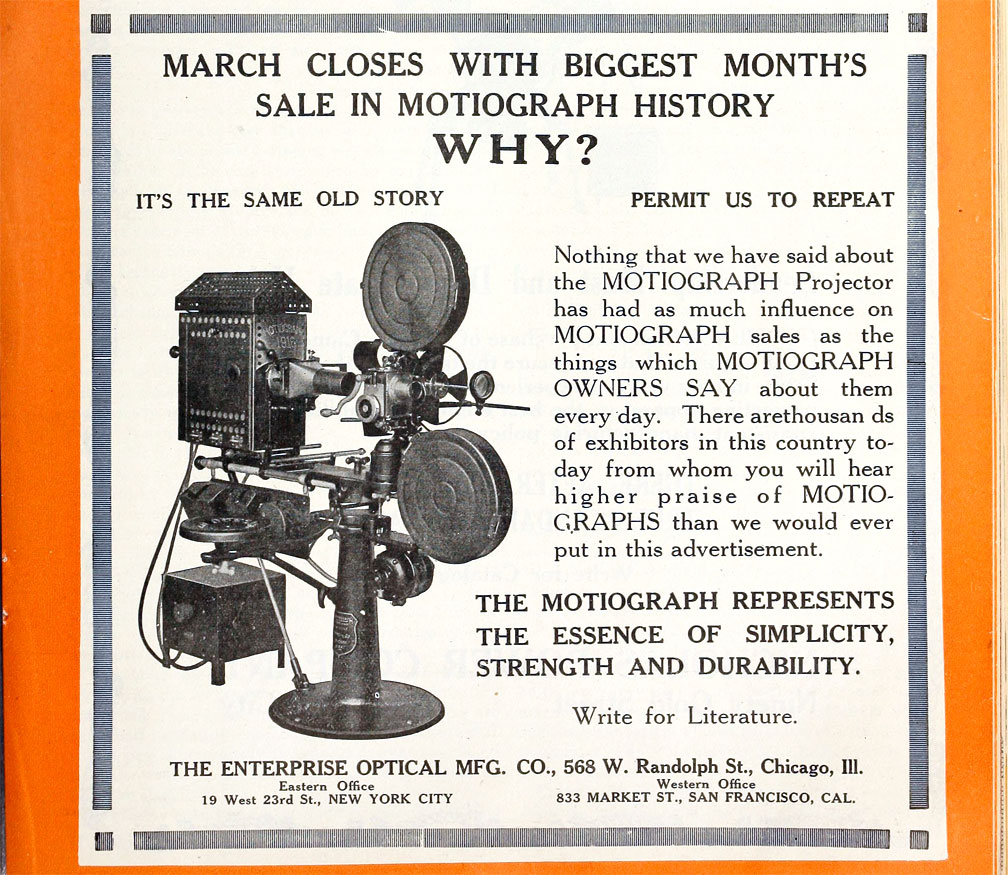In the same way that silent film can be over-sped, with variable speed projection as an option there’s also the possibility of a film being run a bit slower than it ought to be. This can be pretty subjective. But — as with over-speeding — if there’s some knowledge about the film’s year of release and what the average speeds films were being presented at during the time of a picture’s release, this can be corrected.
It can also be ignored, because a film may look like people are running around like the Keystone Kops to the person choosing a running speed.
What is it that makes the film seem like it’s a tad gooey, or running “too slow”? A lot of this comes from what one is used to in watching silent films, both dramas and comedies. Some of us have seen these films for decades, always run at “sound speed”, and we’re used to the speed-up, and expect it. So were movie audiences in the 1920s. By the late 1920s, average speeds in movie theaters were closer to 100 feet a minute – or 27 fps – or faster in the smaller or more rural cinemas.
But, more than “how it looks to you”, what has been the driving force behind my delving into this whole facet of Silent Film and understanding what I now know about taking speeds and projection speeds comes from trying to have an empathic idea of what it was like to make these films. And, namely, what the cameramen, film cutters, directors and actors, were expecting of the way the films were going to be shown in movie theaters.
The speed-up of silent film certainly appears to have been a given, something understood as a norm. The films didn’t have to to run faster than taking speed…but they could. And they were. The fire shutter in 1910s projectors would drop if the projector speed approached 10 frames per second, and there was flicker that needed to be avoided as well. Theater owners would run their program at what ever speed they needed or wanted to in order to maintain their schedule.

If Silent Film was meant to be run at a rate that yielded lifelike, real-time speed on the screen, then why does Charlie Chaplin make City Lights and Modern Times with camera taking speeds below 24 fps? Why would Warner Brothers release Don Juan (1926), the first feature to be released with a synchronized music and effects score on Vitaphone, without retaking the entire film with all its shots filmed at 24 fps? Clearly this “look” of Silent Film is what audiences were used to, and were what they expected and were used to.
So did – and so were – the people who made the films. So, then, what was happening on set, on the shooting stages, that created this effect that does not look like film-running-too-fast?
I mentioned Charlie Chaplin and his sound era silent movies, above. For me, what unlocked all of this was a Chaplin silent film presented in the sound era.
The first post in this series is here.
The previous post (#42) to this one is here.